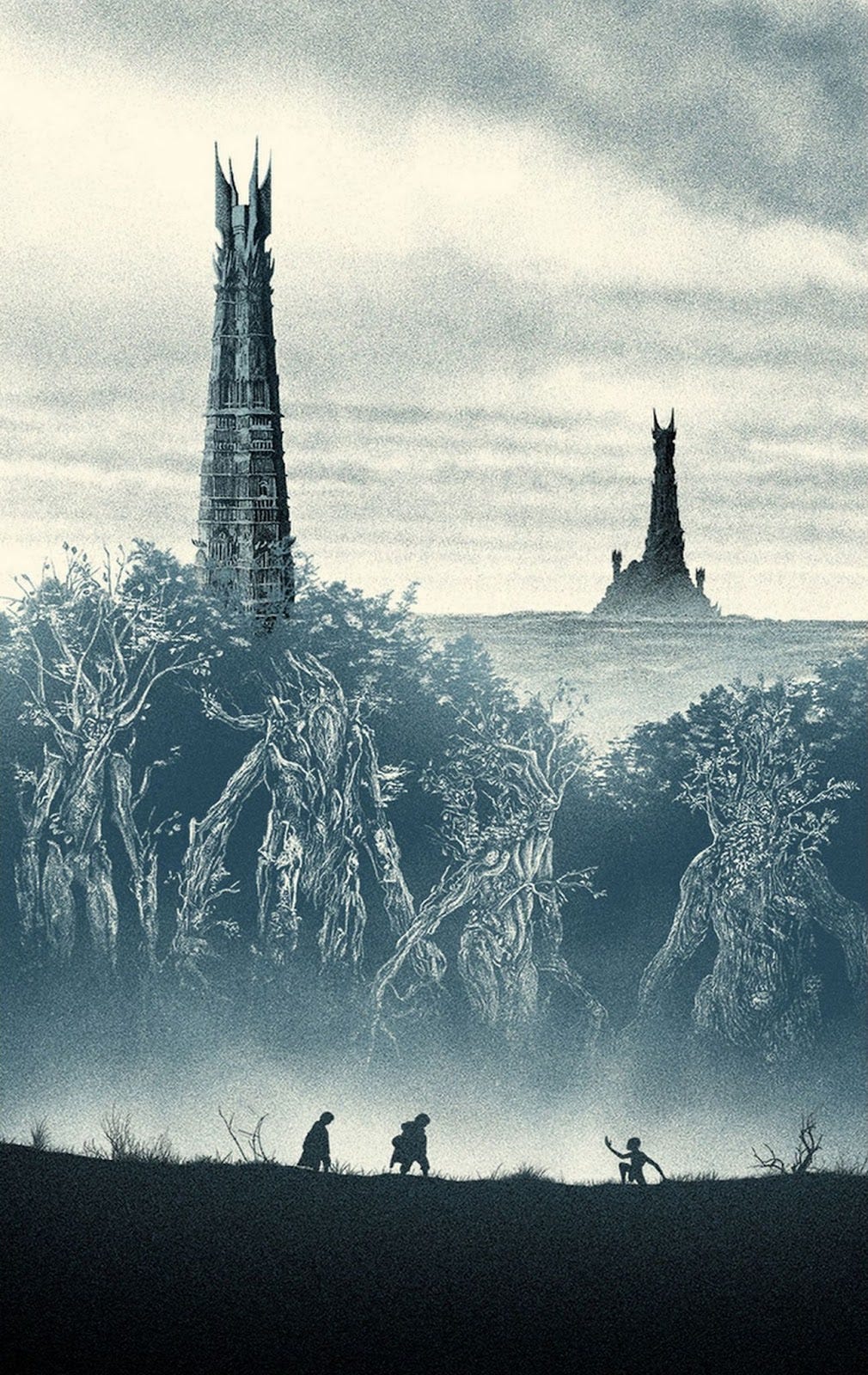More from the series of lecturettes from ancient online course, Hobbits & Heroes, from DU’s graduate program in writing. As is true with the others, I’ll be keeping these nearly exactly as they were way back when my literature students first read them in their class back in 2004. As such, they’ll be a little academic flavored and a lot open for discussion, which is what they were made for. Any discussion prompts, respond in the comments if you like. At this point in class, we would have gotten through the intro materials, The Hobbit, Fellowship of the Ring, and Two Towers.
Number Nine…Number Nine…
2004 Hobbits & Heroes
The magic number three shows up in plenty of ancient story from all over the globe. Jokes still work in threes, heroes in fairy tales have their trials come in threes, and the Holy Trinity of the Christians plays a major role in their lore and worship. These are only, er, three of many other appearances of this “magic number” in ancient tradition. I’m sure you can come up with many more instances in which “three’s the charm.”
Even more powerful a magic number is the number nine: three threes. The ancient Greeks noticed the movement of nine planets around the Sun, and thought nine was full of magic. Nine is thought of in some Far Eastern traditions as the most complete number. Check out this arithmetic puzzle from Japan:
1 x 9 = 09 –> 0 + 9 = 9
2 x 9 = 18 –> 1 + 8 = 9
3 x 9 = 27 –> 2 + 7 = 9 For whole numbers, the answer is always nine.
(from Ninpo Secrets, Shoto Tanemura, 1992 )
It’s interesting to note that in Japan, the number 4 is considered very unlucky, a number of death. While in many indigenous North American traditions, the number 4 is sacred, representing the four directions. Then again, much of the world of LOTR is inspired by pagan cycles like the Mabinogion, early Arthuriana, Celtic tales of the fae, and Scandinavian epics like in the Eddas and Finnish myths surrounding Vainamoinen. These old stories, too, often revolve around threes (and sometimes sevens—you know, the seventh son of a seventh son?) and groups of triples.
The Fellowship of the Nine
The Poem of the Rings of Power mentions four different collections of Rings (remember about the number 4 being symbolic of the four directions) that Sauron dispersed across Middle-earth. These four groups are themselves comprised of “magic numbers” from folklore: there are 3 Elf rings, 7 Dwarf Rings (lucky seven?) and, of course, the 9 Rings of mortal Men.
“The Company of the Ring shall be Nine; and the Nine Walkers shall be set against the Nine Riders that are evil.”
The Fellowship of the Ring begins as a whole Nine, but as soon as The Two Towers opens, the Fellowship has already split into three separate groups of three: Merry and Pippin with Treebeard; Legolas, Gimli and Aragorn (the Rohirrim and Gandalf enter and leave this group sporadically); and Frodo and Sam (with Smeagol entering later as their third). These three triple factions are essential to the fulfillment of the Quest, even more, perhaps, than the original complete Nine would be, judging from all the help they gain and are given in their smaller groups. Would any of them have discovered the Ents, for example, if they had not split up?
The Ring is too powerful for one Ring-Bearer alone (witness the ruin of Gollum under its influence, and Frodo’s anguish under it for a comparatively short time). In order for the Quest to be achieved, therefore, three hobbits must surround it on its journey. Frodo and Sam, Ring-Bearer and faithful “caddy,” both save each other from multiple perils, but without Smeagol/Gollum, the Ring would never have gone into the fire. Obviously, most of this talk refers to Return of the King, so I’ll save more of this discussion till then.
The Two Towers
Which two towers does this book’s title refer to? There are the obvious two: Orthanc and Dol Guldur, representing the two most powerful factions of evil in Middle-earth. But then we deal with another two Towers of power, that represent the greatest noble lineages of Men: Gondor and Rohan. The Tower of Gondor is a literal tower building, but it also houses the White Tree, the Tree of Kings, which could be thought of as the pillar of that city, or of Middle-Earth indeed. Rohan has the Tower of Hornburg, in Helm’s Deep, the center of a pivotal battle in the Great War. Or can we think of the Two Towers as symbolizing the two immortal races, Dwarves and Elves, who will disappear at the end of this story’s war, leaving Middle-earth to become just Earth?
The symbolism of the Tower (or Tree) dates back to shamanism, in that a tribal shaman would mount a ladder, tower, tree, or mountain at the navel of the world in order to communicate with the gods or the Spirit World, then return to earth with the lesson or boon. In old Celtic lore the great Oak or Rowan was the tree of choice for this. In ancient Norse mythology, the World Tree is named Yggdrasil, and its surrounding characters and stories will resonate as quite familiar to us who have read LOTR.
The significance of towers in LOTR is especially powerful, seeing how much emphasis Tolkien places on landscape throughout his work. Re-read the descriptions of the different Towers involved in the War of the Ring, and you’ll get a summary of the powers of the people that surround them.
(...ooo, and what about the twenty-seven steps of Orthanc?—that’s nine times three! And there were an unlucky 13 dwarves in Thorin’s Company, in The Hobbit, which is why Bilbo was recruited to join them. Any other sacred twos, fours, or threes or other magic numbers I’ve missed? Let’s discuss.)





Fascinating.